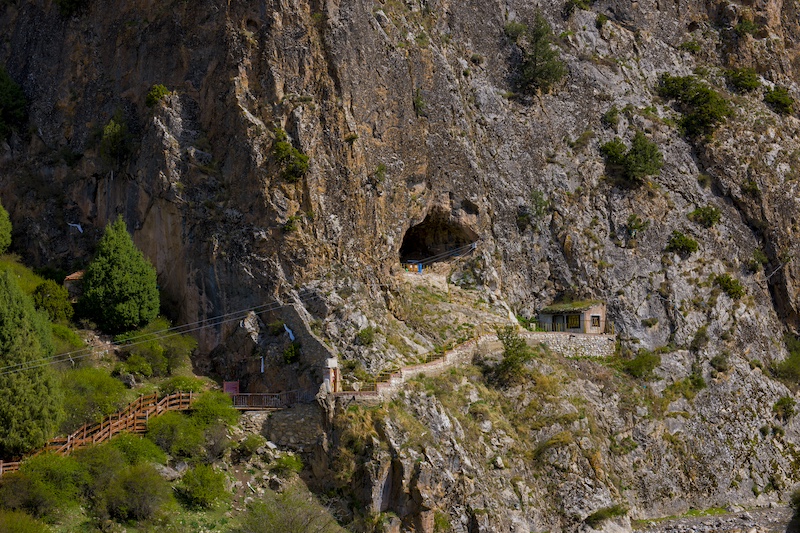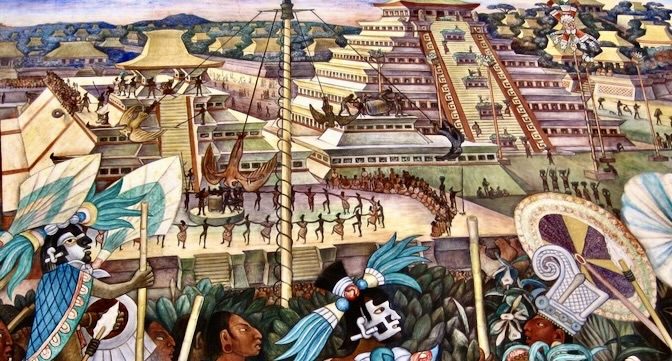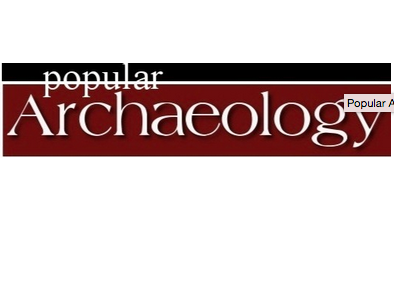News
Recent archaeological and paleoanthropological news from around the world.

Rock art and archaeological record reveal man’s complex relationship with Amazonian animals - Popular Archaeology
Jul 25, 2024
<a href="https://news.google.com/rss/articles/CBMigwFodHRwczovL3BvcHVsYXItYXJjaGFlb2xvZ3kuY29tL2FydGljbGUvcm9jay1hcnQtYW5kLWFyY2hhZW9sb2dpY2FsLXJlY29yZC1yZXZlYWwtbWFucy1jb21wbGV4LXJlbGF0aW9uc2hpcC13aXRoLWFtYXpvbmlhbi1hbmltYWxzL9IBAA?oc=5" target="_blank">Rock art and archaeological record reveal man’s complex relationship with Amazonian animals</a> <font color="#6f6f6f">Popular Archaeology</font>
Popular Archaeology

Cook like a Neanderthal: Scientists try to replicate ancient butchering methods to learn how Neanderthals ate birds - Popular Archaeology
Jul 24, 2024
<a href="https://news.google.com/rss/articles/CBMimwFodHRwczovL3BvcHVsYXItYXJjaGFlb2xvZ3kuY29tL2FydGljbGUvY29vay1saWtlLWEtbmVhbmRlcnRoYWwtc2NpZW50aXN0cy10cnktdG8tcmVwbGljYXRlLWFuY2llbnQtYnV0Y2hlcmluZy1tZXRob2RzLXRvLWxlYXJuLWhvdy1uZWFuZGVydGhhbHMtYXRlLWJpcmRzL9IBAA?oc=5" target="_blank">Cook like a Neanderthal: Scientists try to replicate ancient butchering methods to learn how Neanderthals ate birds</a> <font color="#6f6f6f">Popular Archaeology</font>
Popular Archaeology

The emergence of humans coincides with an extinction rate surge for proboscideans, the group that includes wooly mammoths - Popular Archaeology
Jul 24, 2024
<a href="https://news.google.com/rss/articles/CBMioQFodHRwczovL3BvcHVsYXItYXJjaGFlb2xvZ3kuY29tL2FydGljbGUvdGhlLWVtZXJnZW5jZS1vZi1odW1hbnMtY29pbmNpZGVzLXdpdGgtYW4tZXh0aW5jdGlvbi1yYXRlLXN1cmdlLWZvci1wcm9ib3NjaWRlYW5zLXRoZS1ncm91cC10aGF0LWluY2x1ZGVzLXdvb2x5LW1hbW1vdGhzL9IBAA?oc=5" target="_blank">The emergence of humans coincides with an extinction rate surge for proboscideans, the group that includes wooly mammoths</a> <font color="#6f6f6f">Popular Archaeology</font>
Popular Archaeology

Discoveries in the Shadow of the Step Pyramid - Popular Archaeology
Jul 23, 2024
<a href="https://news.google.com/rss/articles/CBMiWGh0dHBzOi8vcG9wdWxhci1hcmNoYWVvbG9neS5jb20vYXJ0aWNsZS9kaXNjb3Zlcmllcy1pbi10aGUtc2hhZG93LW9mLXRoZS1zdGVwLXB5cmFtaWQtMi_SAQA?oc=5" target="_blank">Discoveries in the Shadow of the Step Pyramid</a> <font color="#6f6f6f">Popular Archaeology</font>
Popular Archaeology

Traveling Upright: Humanity’s First Global Ancestor - Popular Archaeology
Jul 17, 2024
<a href="https://news.google.com/rss/articles/CBMiXGh0dHBzOi8vcG9wdWxhci1hcmNoYWVvbG9neS5jb20vYXJ0aWNsZS90cmF2ZWxpbmctdXByaWdodC1odW1hbml0eXMtZmlyc3QtZ2xvYmFsLWFuY2VzdG9yLTIv0gEA?oc=5" target="_blank">Traveling Upright: Humanity’s First Global Ancestor</a> <font color="#6f6f6f">Popular Archaeology</font>
Popular Archaeology

The AlUla Approach to Archaeology - Popular Archaeology
Jul 17, 2024
<a href="https://news.google.com/rss/articles/CBMiSmh0dHBzOi8vcG9wdWxhci1hcmNoYWVvbG9neS5jb20vYXJ0aWNsZS90aGUtYWx1bGEtYXBwcm9hY2gtdG8tYXJjaGFlb2xvZ3kv0gEA?oc=5" target="_blank">The AlUla Approach to Archaeology</a> <font color="#6f6f6f">Popular Archaeology</font>
Popular Archaeology

New geological datings place the first European hominids in the south of the Iberian Peninsula 1.3 million years ago - Popular Archaeology
Jul 15, 2024
<a href="https://news.google.com/rss/articles/CBMinQFodHRwczovL3BvcHVsYXItYXJjaGFlb2xvZ3kuY29tL2FydGljbGUvbmV3LWdlb2xvZ2ljYWwtZGF0aW5ncy1wbGFjZS10aGUtZmlyc3QtZXVyb3BlYW4taG9taW5pZHMtaW4tdGhlLXNvdXRoLW9mLXRoZS1pYmVyaWFuLXBlbmluc3VsYS0xLTMtbWlsbGlvbi15ZWFycy1hZ28v0gEA?oc=5" target="_blank">New geological datings place the first European hominids in the south of the Iberian Peninsula 1.3 million years ago</a> <font color="#6f6f6f">Popular Archaeology</font>
Popular Archaeology

Denisovans coexisted with modern humans on Tibetan plateau - EarthSky
Jul 12, 2024
A daily update by email. Science news, great photos, sky alerts.
EarthSky

The Papantla Pole Dancers - Popular Archaeology
Jul 11, 2024
An ancient Mesoamerican community performed a precarious ritual dance to curry favor with their gods.
Popular Archaeology
